

“He is not a couturier; Paco Rabanne is a metallurgist” – fashion designer Coco Chanel
“He is not a couturier; he’s a metallurgist:” that’s what Coco Chanel said of Paco Rabanne, the Spanish perfume and fashion designer who recently passed away at the age of 88.
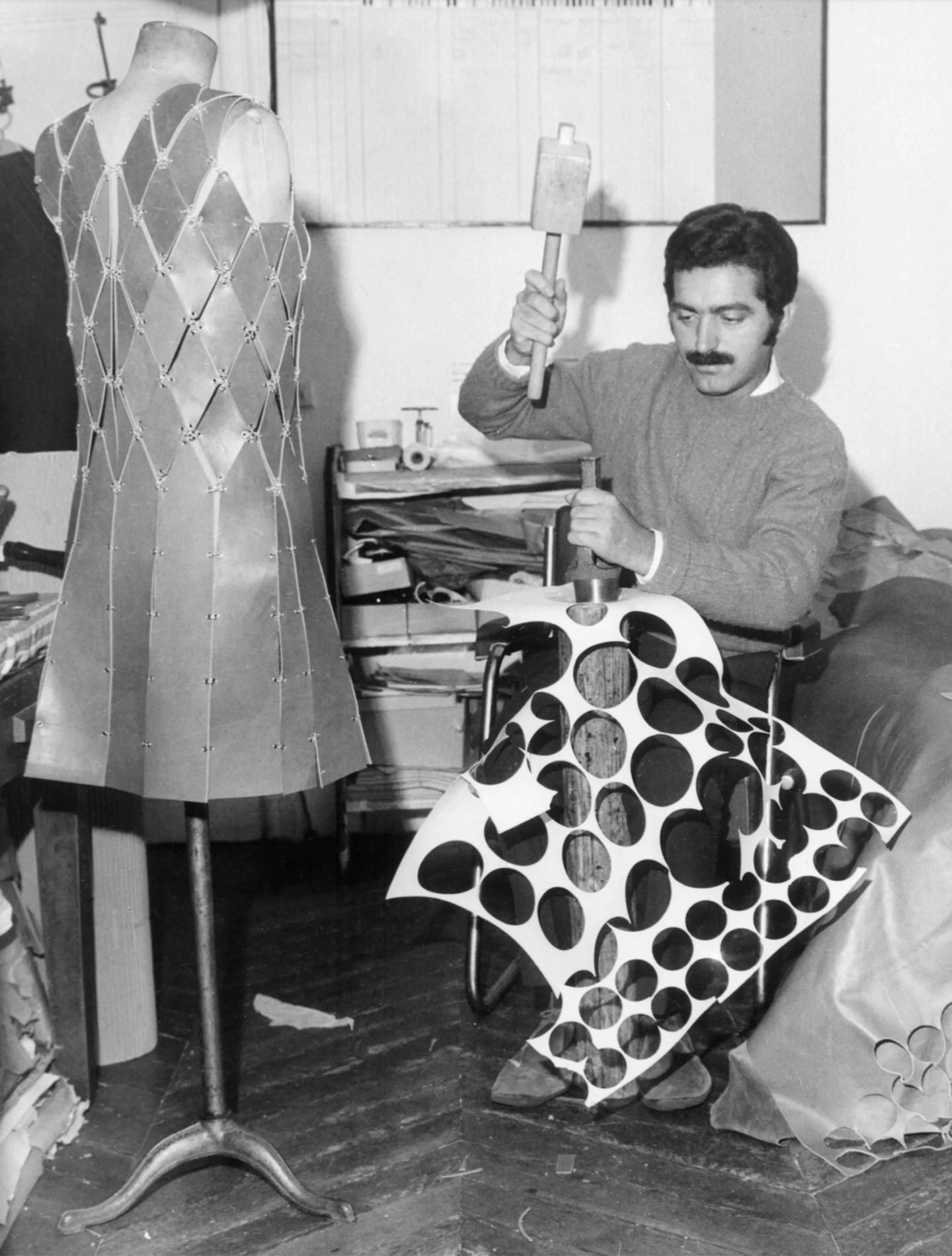
Paco Rabanne in his studio in 1966
A creative with a futurist soul and co-creator of the 1960s Space Age movement (alongside André Courrèges and Pierre Cardin), Paco Rabanne actually preferred to work with non-traditional, non-fashion materials and included small metal plates in his avant-garde collections.
Paco Rabanne’s early life and road to success
Born into a military family in 1934 in Pasajes, Spain’s Basque region, Francisco Rabaneda y Cuervo – known as Paco Rabanne – moved to Paris in 1939 after General Francisco Franco’s Nationalist forces seized Madrid and won the Spanish Civil War. With his mother having worked as a seamstress for Cristóbal Balenciaga, the Spanish couturier remained a profound influence throughout Rabanne’s career. But the fashion metallurgist studied architecture at the École Nationale Supérieure des Beaux-Arts in Paris.
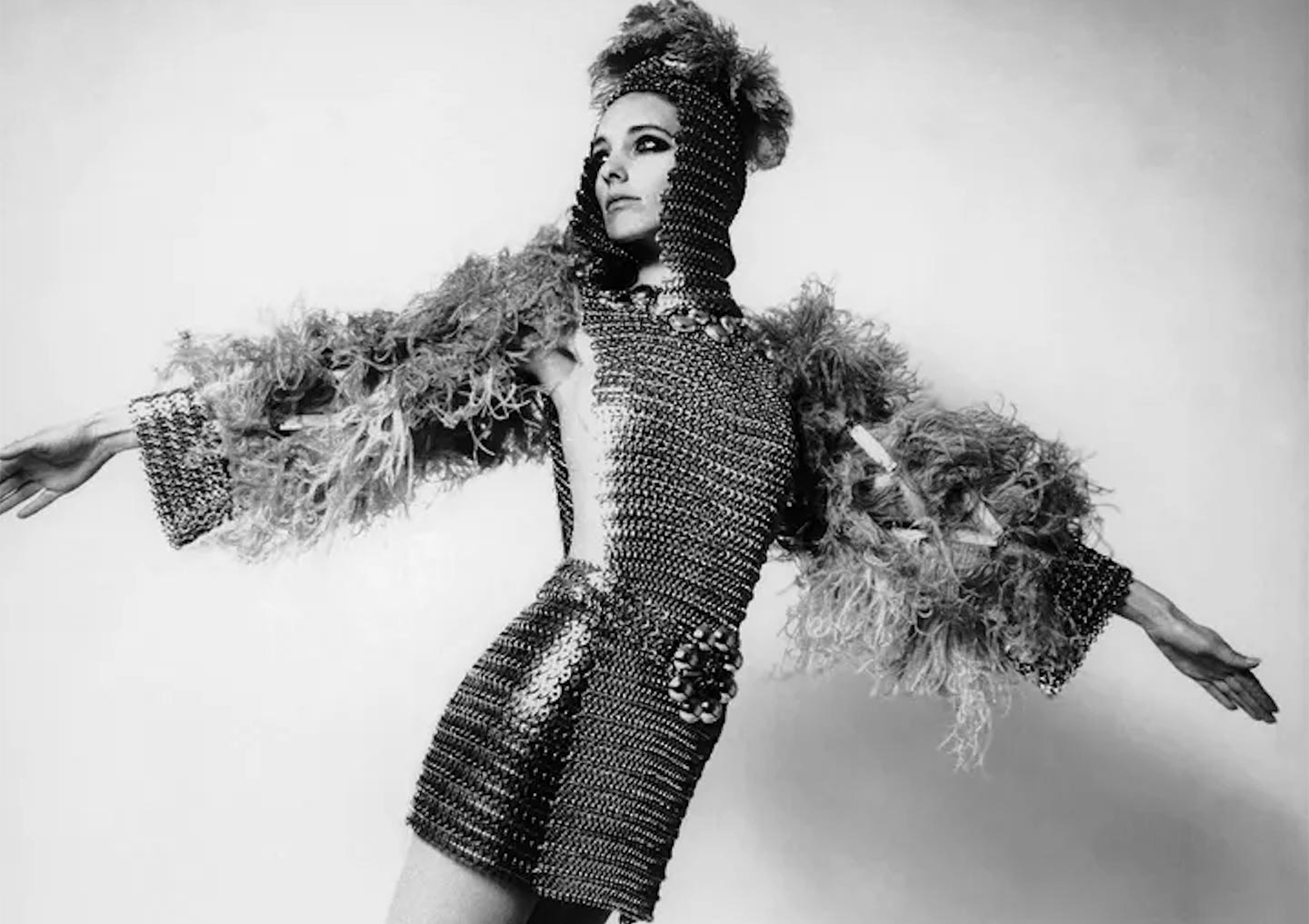
A model wearing a Paco Rabanne spring-summer 1969 ensemble in metallic sequins
Rabanne’s path in fashion began in the 1960s when he started creating bold jewellery, buttons and accessories for Givenchy, Nina Ricci, Pierre Cardin and André Courrèges: this is when his vision came to life by mixing different metals with sublime elegance.
When “the virtuoso of industrial couture” established his eponymous fashion house in 1966, Paco Rabanne finally used exactly those metals to create new garments, combining them with hammered metals, pliable plastics, paper, fibre optics and even cement for unique outcomes. No material could stop this visionary mastermind’s creativity, irrepressibly daring in his vision and approach to fashion.
The radical spirit of the co-creator of the 1960s Space Age movement, who introduced pliers and wires in couturiers’ sewing kits
Author of a new fashion designed to amaze, Paco Rabanne was also one of the first designers to use music as a soundtrack in fashion shows, something unusual for that historical period. His incredible personality was also recognised by Salvador Dalí, who once boasted: “There are only two geniuses in Spain: me and Paco Rabanne.” But Nemo propheta in patria, as frequently happens; so, Paris became the city where Rabanne’s professional growth flourished, heralding the designer’s worldwide success.
“There are only two geniuses in Spain: me and Paco Rabanne” – artist Salvador Dalí
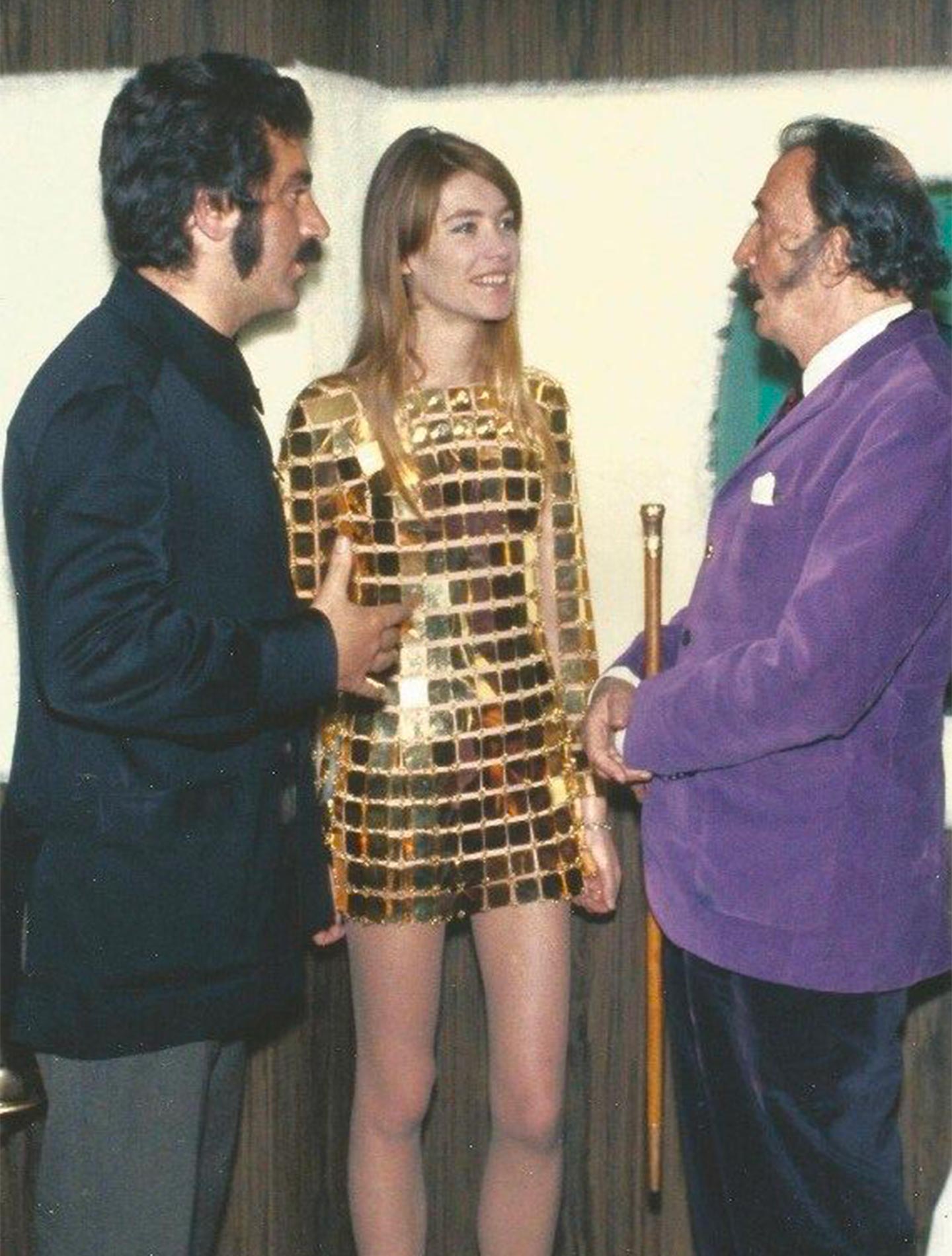
Paco Rabanne, Françoise Hardy in a Paco Rabanne dress and Salvador Dali in May 1968
However, his success was doubted even in the Ville lumière, where his brand thrived, as post-war industrial materials, such as his chainmail construction, had never been seen on the catwalk. And his fashion based on previously unknown techniques was not fully appreciated.
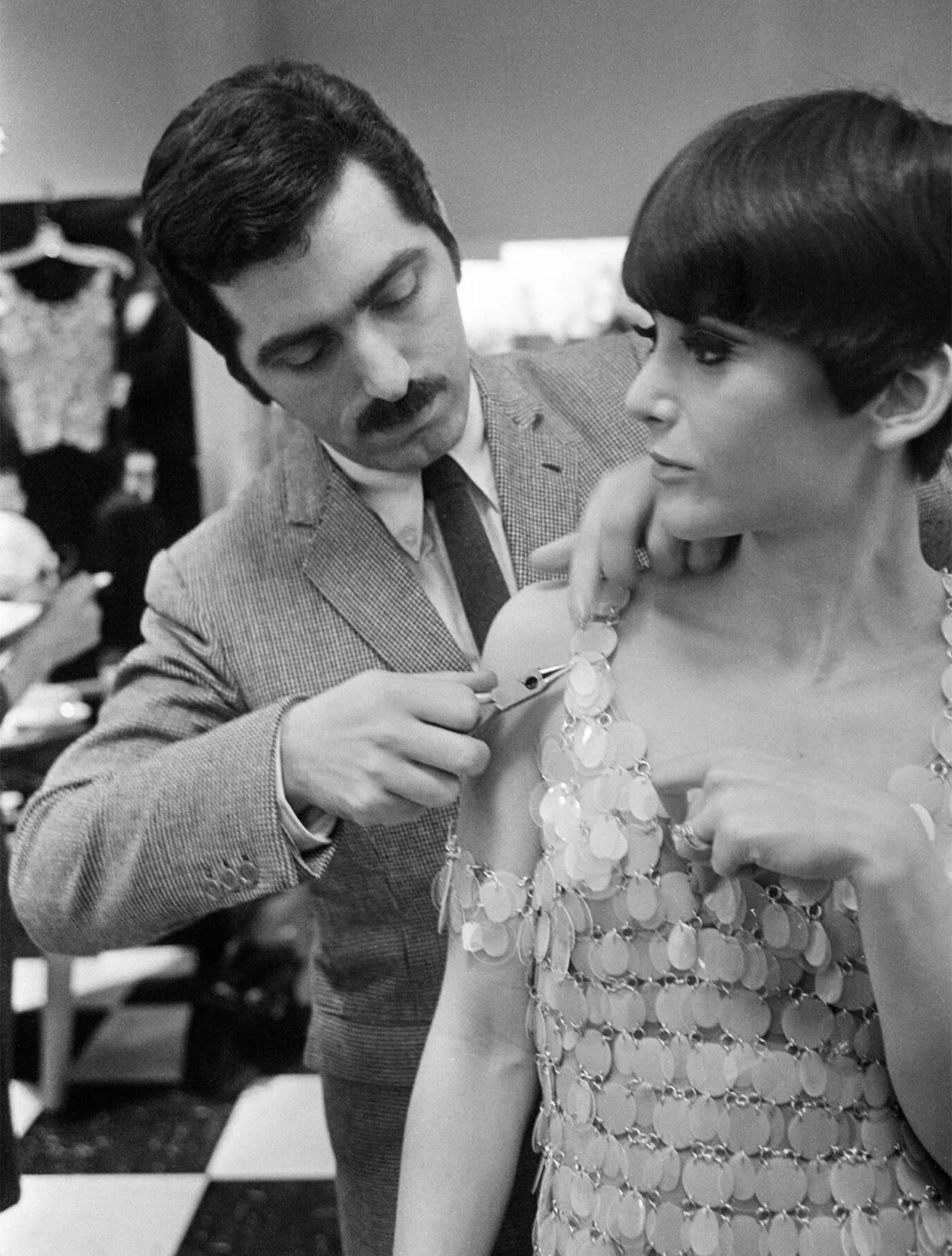
Paco Rabanne in New York in 1966, using pliers to make a repair to one of his plastic and metal dresses
Paco Rabanne had pliers and wires in his sewing kit to create clothes whose design was completely unfamiliar at the time. According to Vogue, Rabanne would later even sell do-it-yourself kits consisting of discs, rings and pliers so that independent women could make their own couture at home.
“A woman going out for the evening in a Paco Rabanne dress of plastic and metal might slip pliers into her purse along with a comb and lipstick” – fashion critic Angela Taylor (1966)
Paco Rabanne’s debut with “12 unwearable dresses in contemporary materials,” his chain-link minidresses loved by Brigitte Bardot and Jane Fonda, and American tastemakers as the creative’s powerful allies
No wonder he titled his breakout show “12 unwearable dresses in contemporary materials,” a collection resulting in a selection of sharp metallic looks that infuriated the French fashion press. A défilé with a provocative attitude held at the Parisian George V, the show featured music and included models of colour in its casting. It also introduced the public to Rabanne’s way of mixing historical elements – the combination of metal and wire was almost reminiscent of the pieces worn by Joan of Arc or knights in medieval times – with contemporary materials and the abbreviated silhouettes of the 1960s.
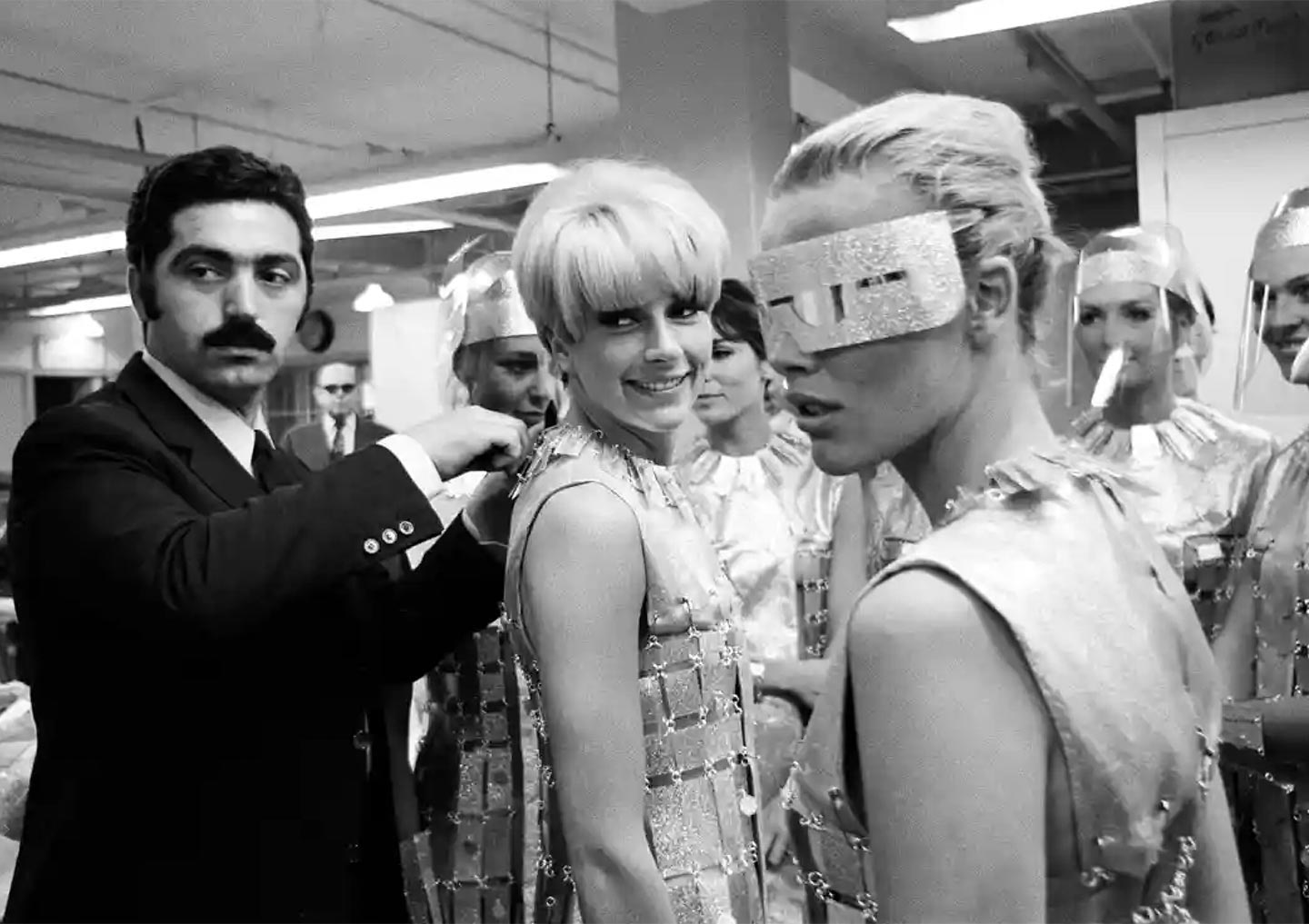
Paco Rabanne on the set of Casino Royale at Elstree Studios in 1966
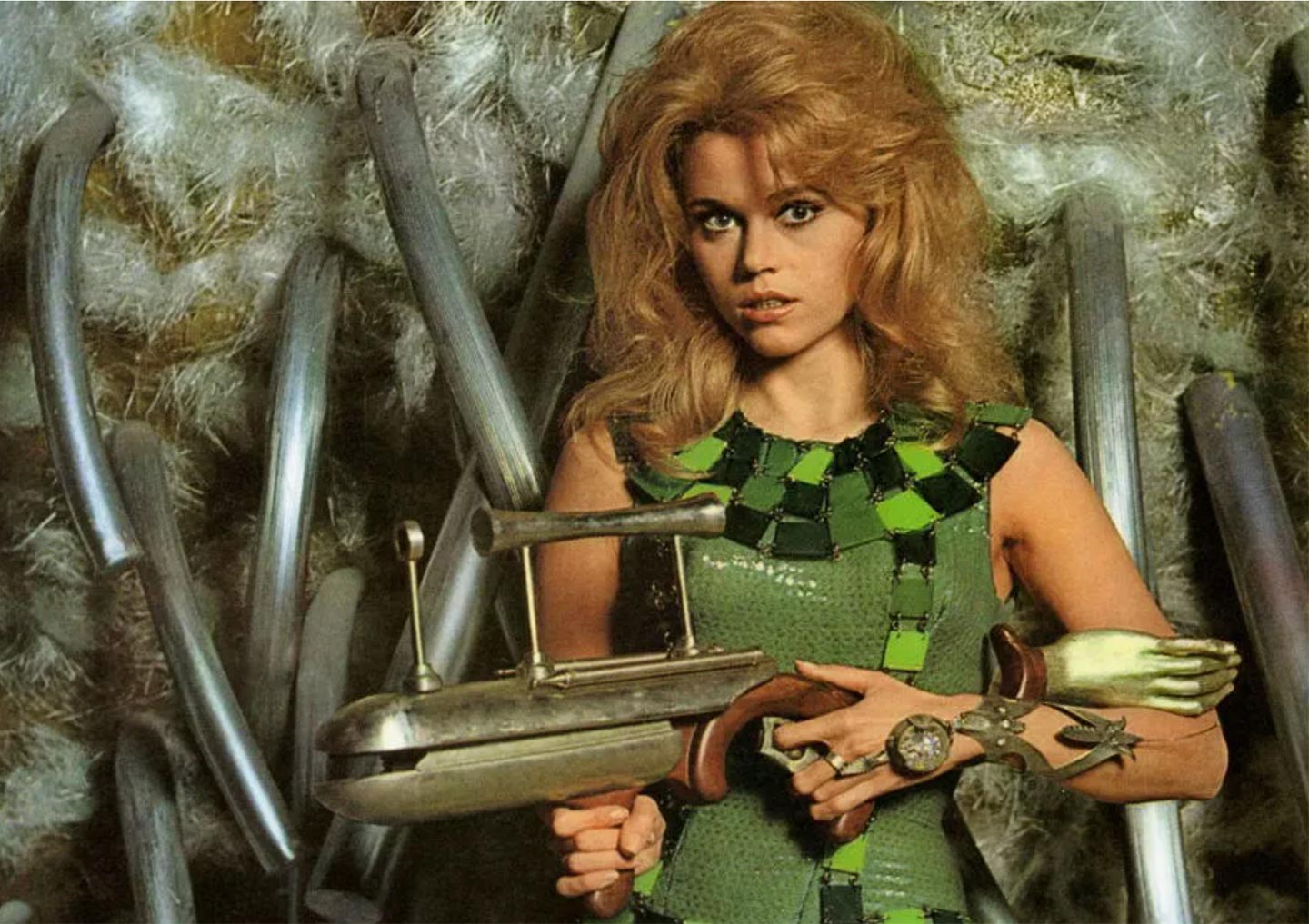
Jane Fonda in a portrait for the 1968 movie Barbarella, for which Paco Rabanne designed the costumes
While Paco Rabanne’s chain-link minidresses were made famous by Jane Birkin, Brigitte Bardot, Audrey Hepburn in Two for the road and Jane Fonda in Barbarella, the designer also found a fan in the French singer-songwriter Françoise Hardy. In 1968, Rabanne made the yé-yé star a gold minidress inlaid with diamonds consisting of 1,000 golden plaques and 300 carats. At the time, it was considered the most expensive dress ever made.
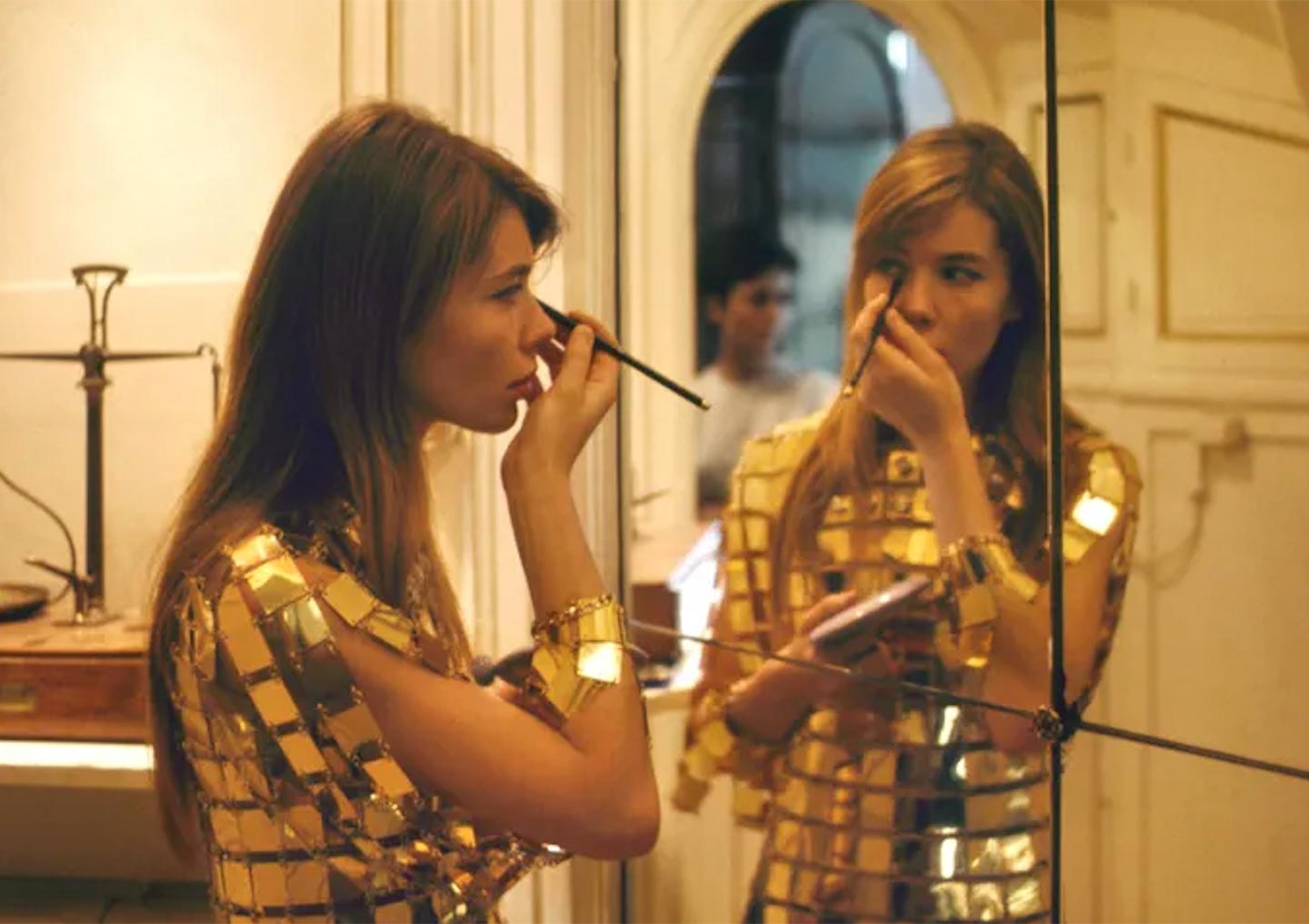
Françoise Hardy wearing a Paco Rabanne gold plate dress in 1968
Moreover, he found powerful allies in exponents of American taste, such as Peggy Guggenheim and Diana Vreeland.
“It was the Americans who believed in me and created me” – fashion designer Paco Rabanne (2002)
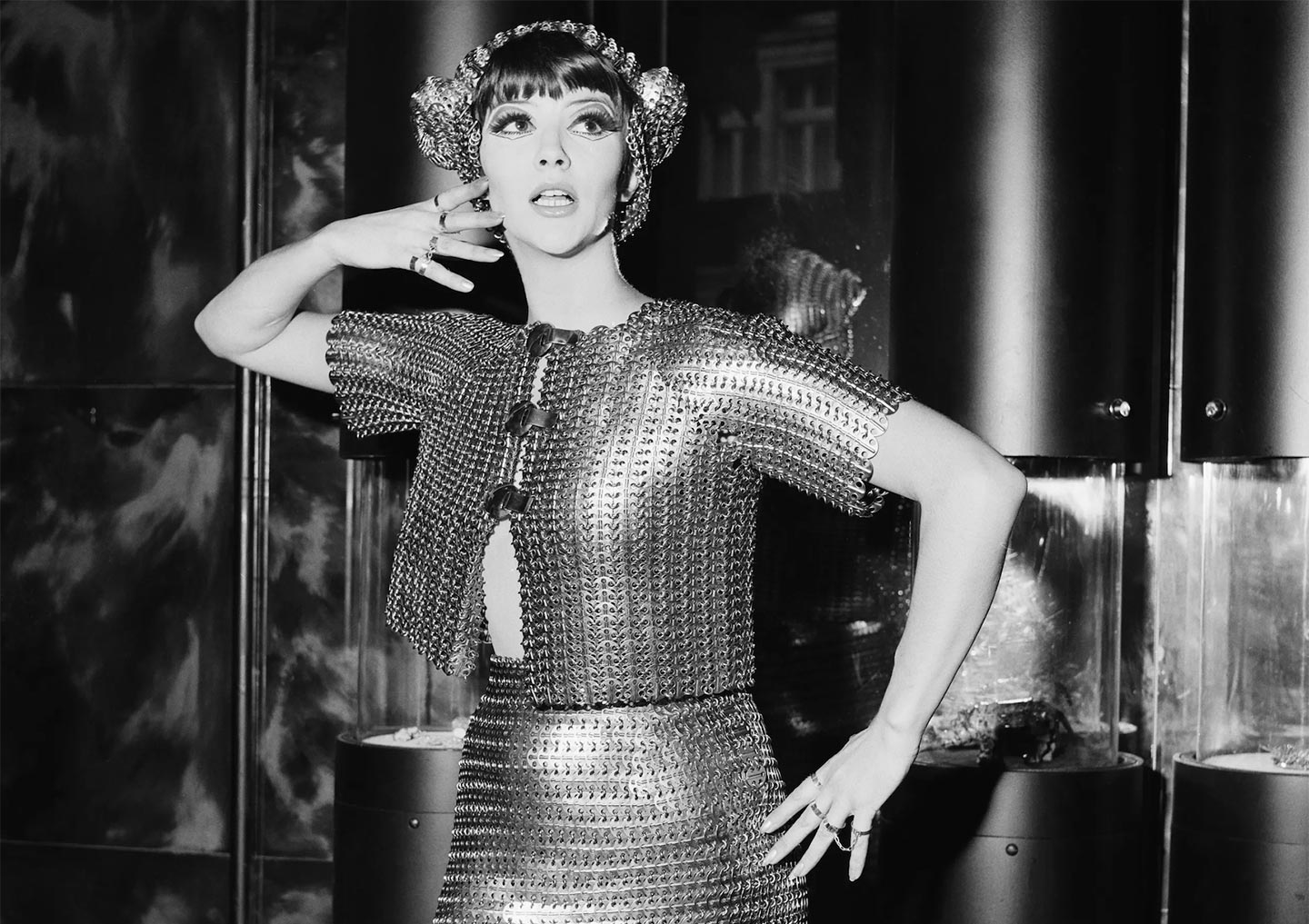
Model Jackie Bowyer in a Paco Rabanne silver chainmail bolero and mini-skirt, November 1967
The international jet set did not let this forward-thinking man with a rebellious soul slip through their fingers. The stars immediately began wearing his creations at the most prestigious and mundane events.
“In France, during the ‘60s, women emerged as warriors because they needed to affirm their desire for emancipation, freedom, and liberty. The armour was almost necessary” – fashion designer Paco Rabanne (2002)
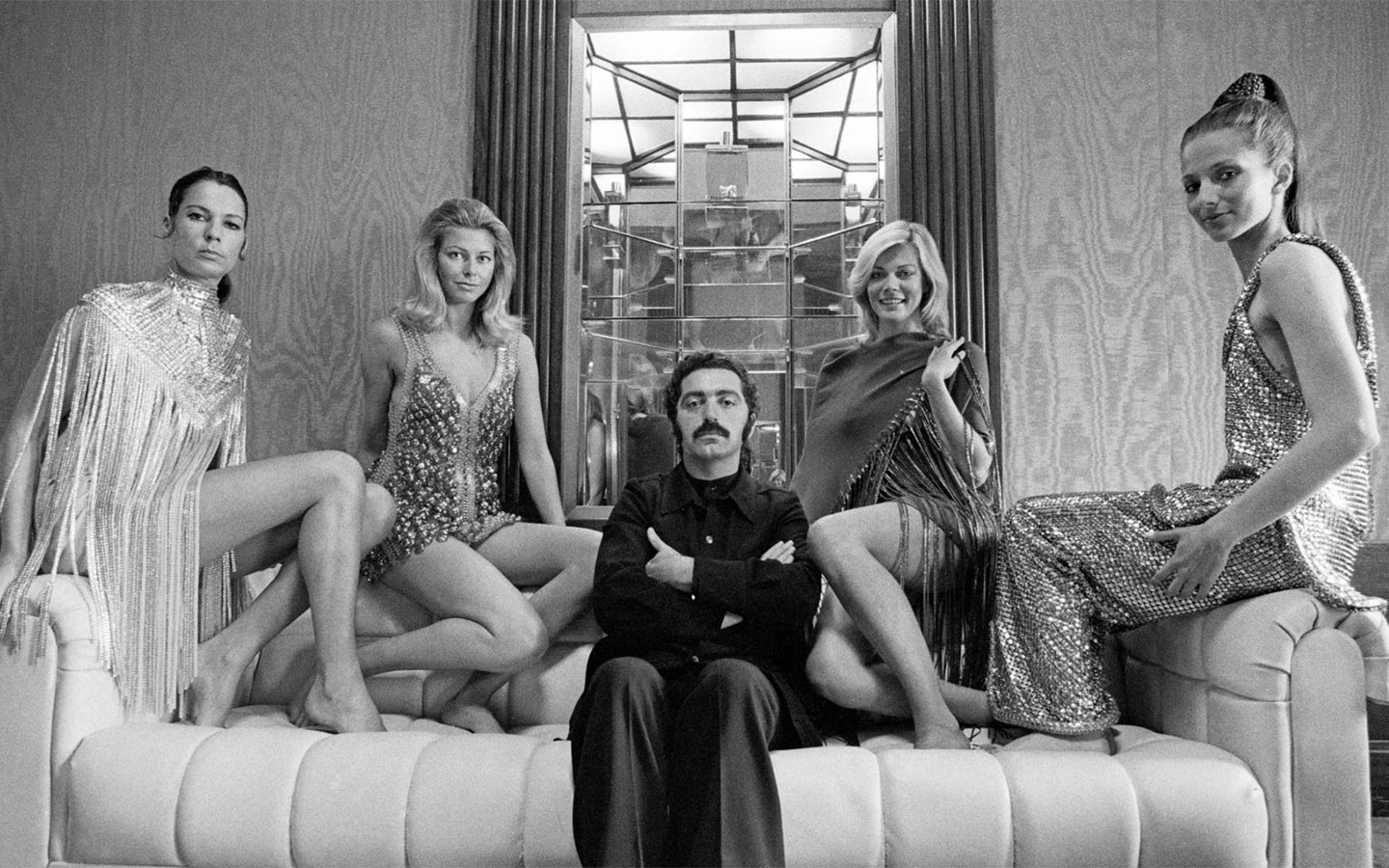
Paco Rabanne, with models in his atelier, June 18, 1970
With the 1960s synonymous with his name, Space Age guru Paco Rabanne made women shine, making them look and feel as unique and timeless as the pieces he created.
“The first time I went to one of Rabanne’s shows, I remember saying: ‘What is going on here? I don’t believe it! It’s so beautiful and so different! Gladiator dresses, a suit of armour, a warrior, the new male” – fashion editor Polly Mellen told (2002)
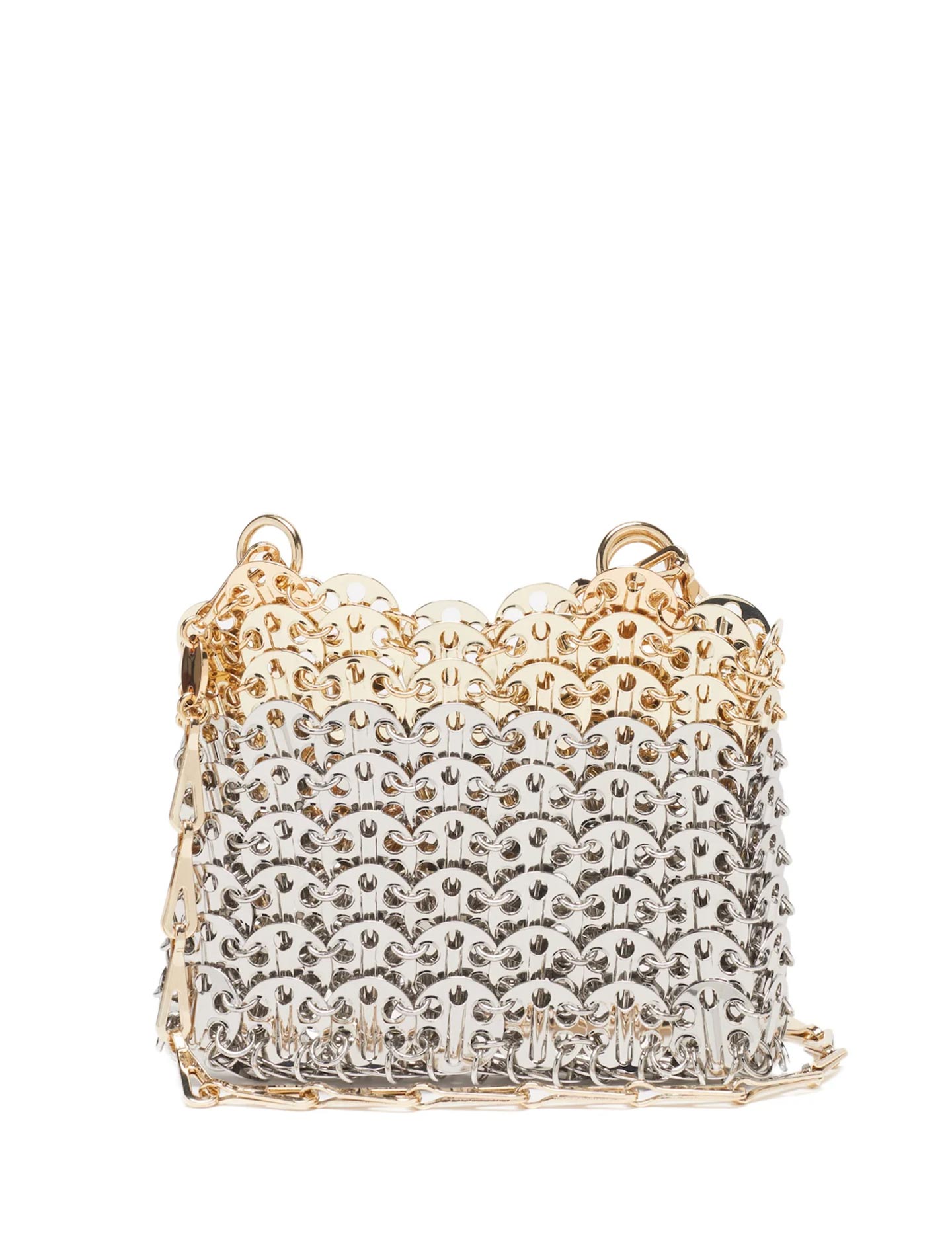
Paco Rabanne's iconic 1969 bag
His first handbag, the Paco Rabanne bag 1969, is still in production and a collector’s item. The same can be said of his shimmering mini-skirt, composed by assembling silver-tone discs interconnected by metal silver-tone rings as a true vintage gem.
“It is important to remain impertinent, radical. Creation must shock” – fashion designer Paco Rabanne
The journey of the designer who made transgression magnetic between fashion, fragrances, innovation and esotericism
Author of a real brand extension, Paco Rabanne created a multifaceted reality around clothes, including couture, prêt-à-porter and the world of perfumes.
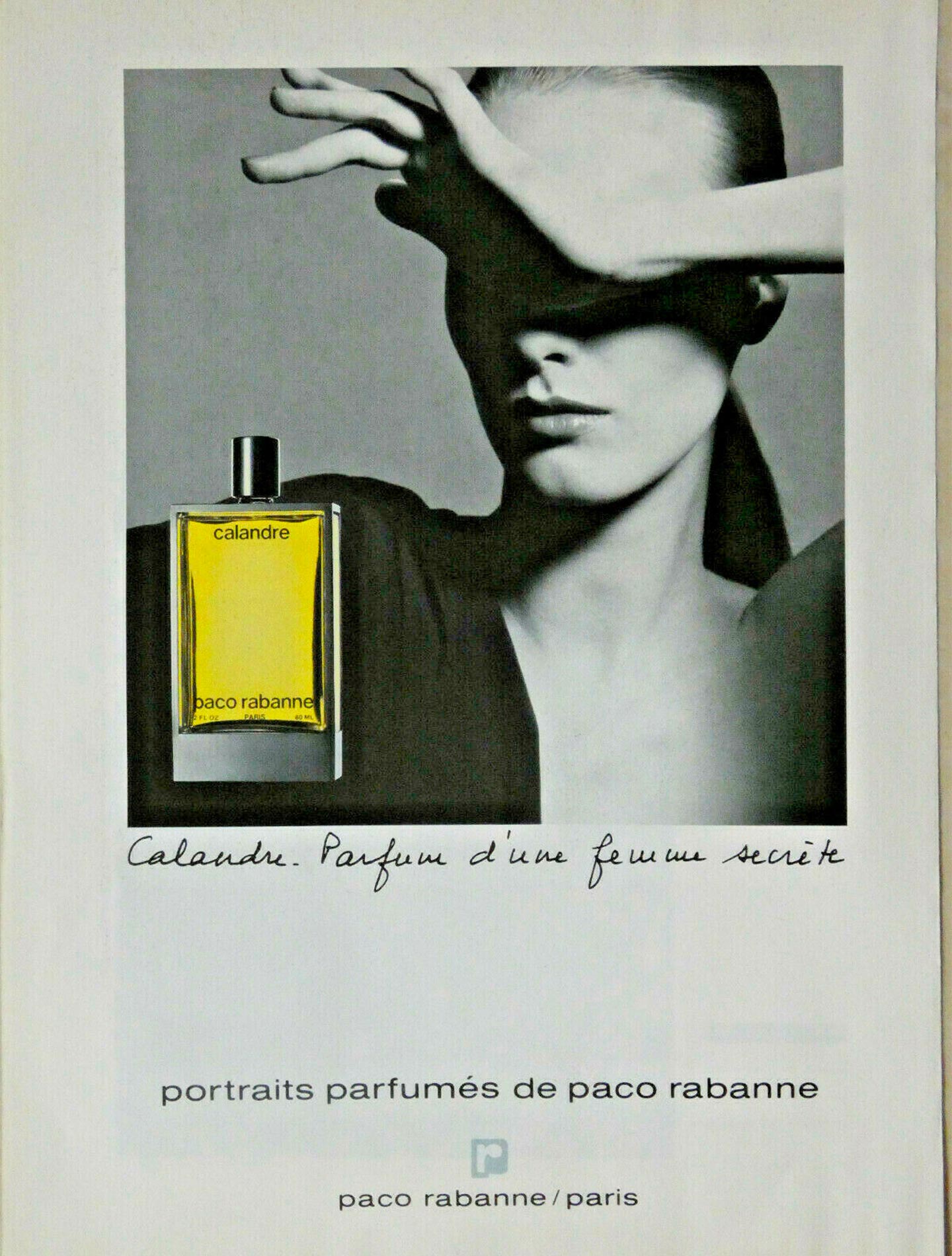
Paco Rabanne imagined a fragrance called Calandre – the word means 'automobile grill' – and turned it into an icon of modern femininity
“Paco Rabanne made transgression magnetic,” stated José Manuel Albesa, president of the fashion and beauty division of Puig, the group that now controls Paco Rabanne’s fashion and fragrance lines. “Who else could induce fashionable Parisian women to clamour for dresses made of plastic and metal? Who but Paco Rabanne could imagine a fragrance called Calandre – the word means “automobile grill”, you know – and turn it into an icon of modern femininity?”
With his name appearing on some of the best-selling fragrances of the last half-decade, Paco Rabanne launched his debut fragrance Calandre – created with nose Michel Hy – in 1969, enclosing it in a metal bottle that echoed a Rolls-Royce front grille.
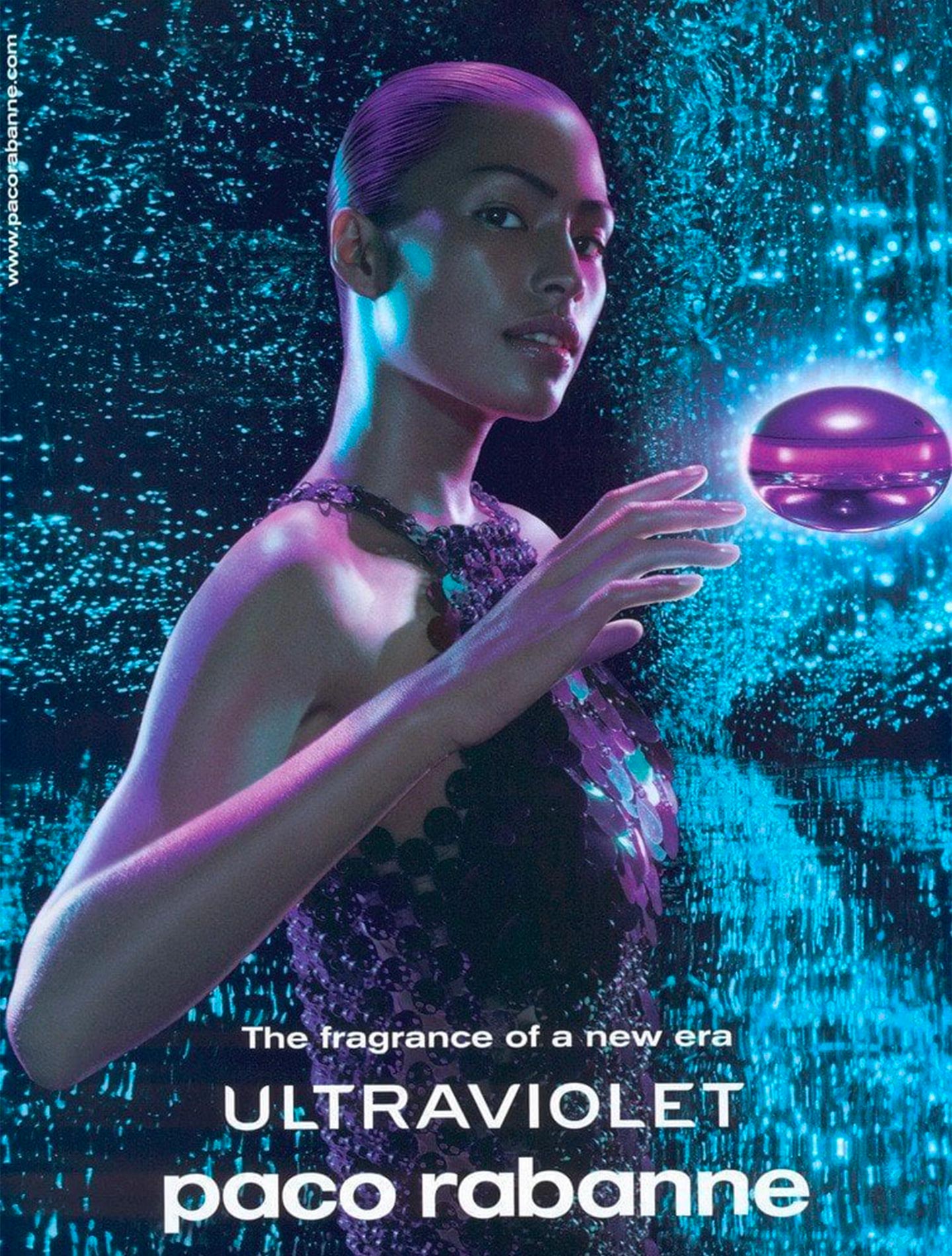
Ultraviolet perfume by Paco Rabanne
And it was in the perfumery sector that Paco Rabanne consolidated his great popularity by creating iconic scents such as Ultraviolet in 2000. The fragrance world has then accompanied the brand into the new millennium with One Million and Lady Million, up to 2013’s Invictus.
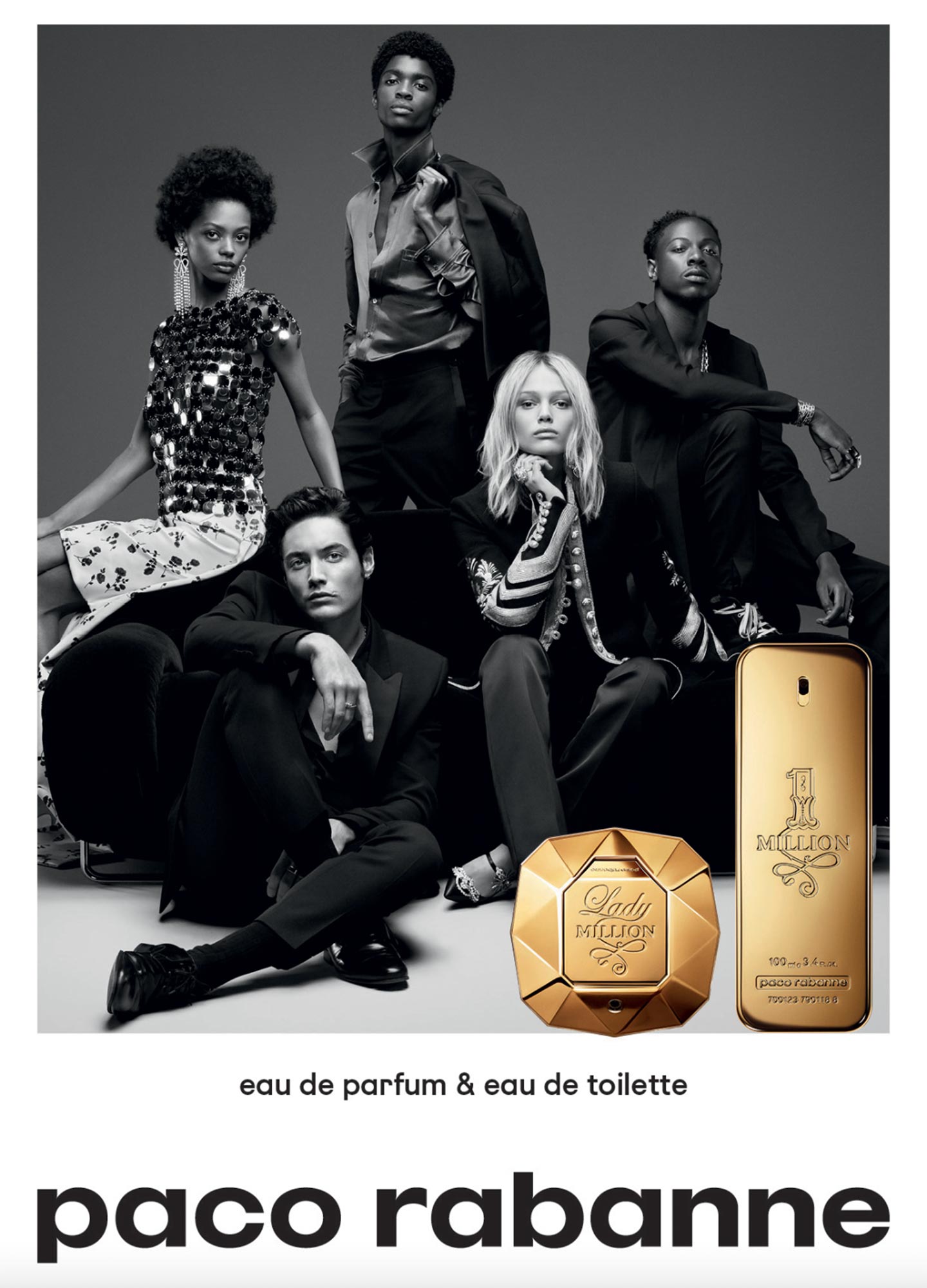
One Million and Lady Million by Paco Rabanne
In 1986 the Paco Rabanne brand entered the orbit of the Puig group, and in 1999 the Spanish designer retired to private life, turning his attention to the world of the occult, esotericism, astrology and science fiction.
“A major personality in fashion, Paco Rabanne’s was a daring, revolutionary and provocative vision, conveyed through a unique aesthetic” – Puig’s chairman Marc Puig
Paco Rabanne has made few public appearances since his retirement. However, in 2010 he spoke to students at a high school in France. “Not everyone can be a star. You have to be smart,” Rabanne told them, as Le Télégramme reported. “The main thing is to talk about yourself, to differentiate yourself from others. Never copy.”
“Not everyone can be a star. You have to be smart” – designer Paco Rabanne (2010)
Naturally, the visionary left an indelible mark on the history of fashion. Today, his pioneering approach is a benchmark and an object of study for new generations of creatives seeking to research (and design) what tomorrow’s world will look like.
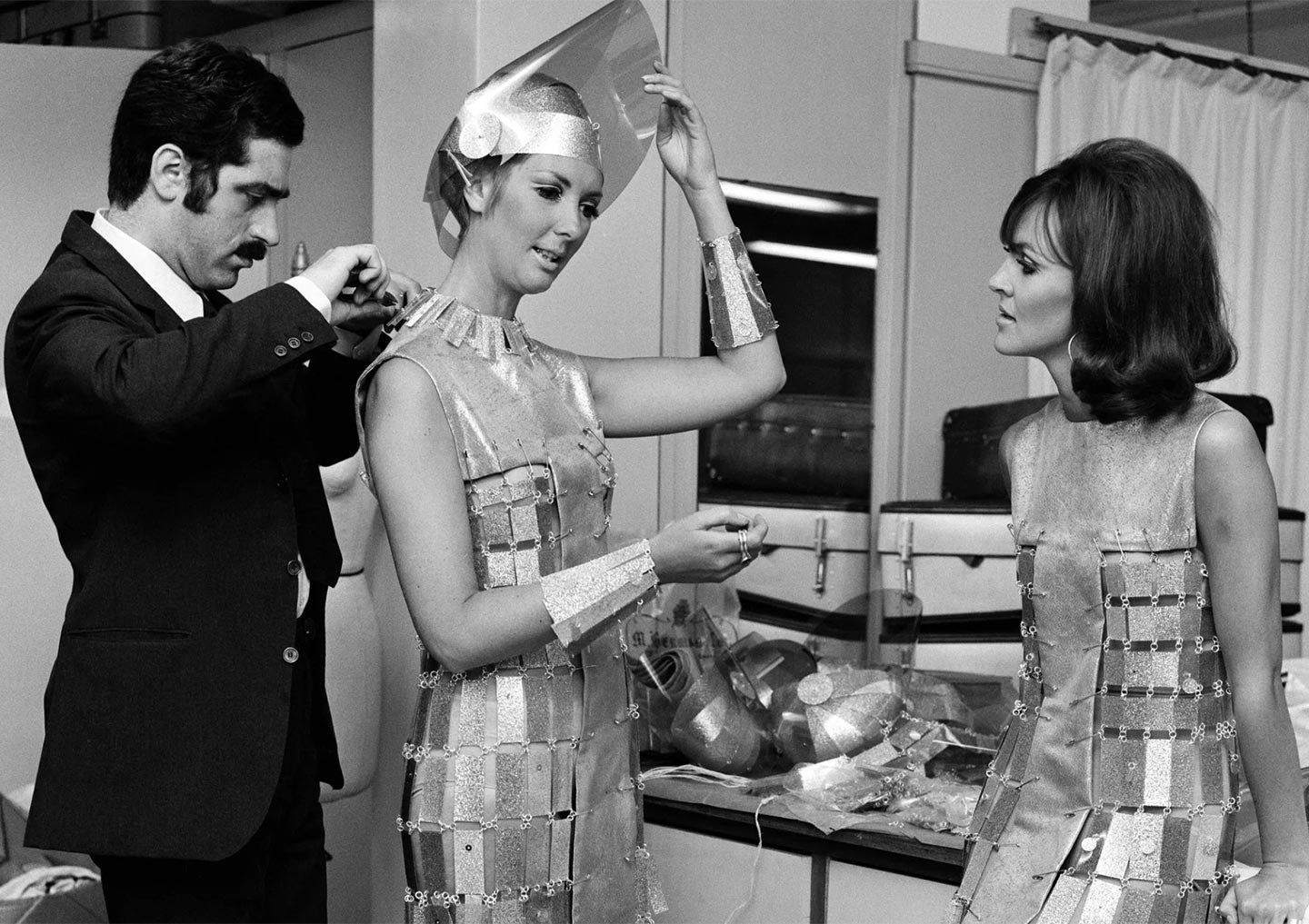
Paco Rabanne with models
Agnese Pasquinelli
Fashion Business, Digital Communication & Media student, 2nd year, Milan


